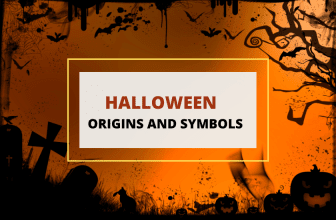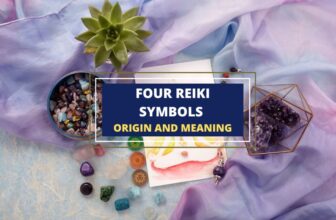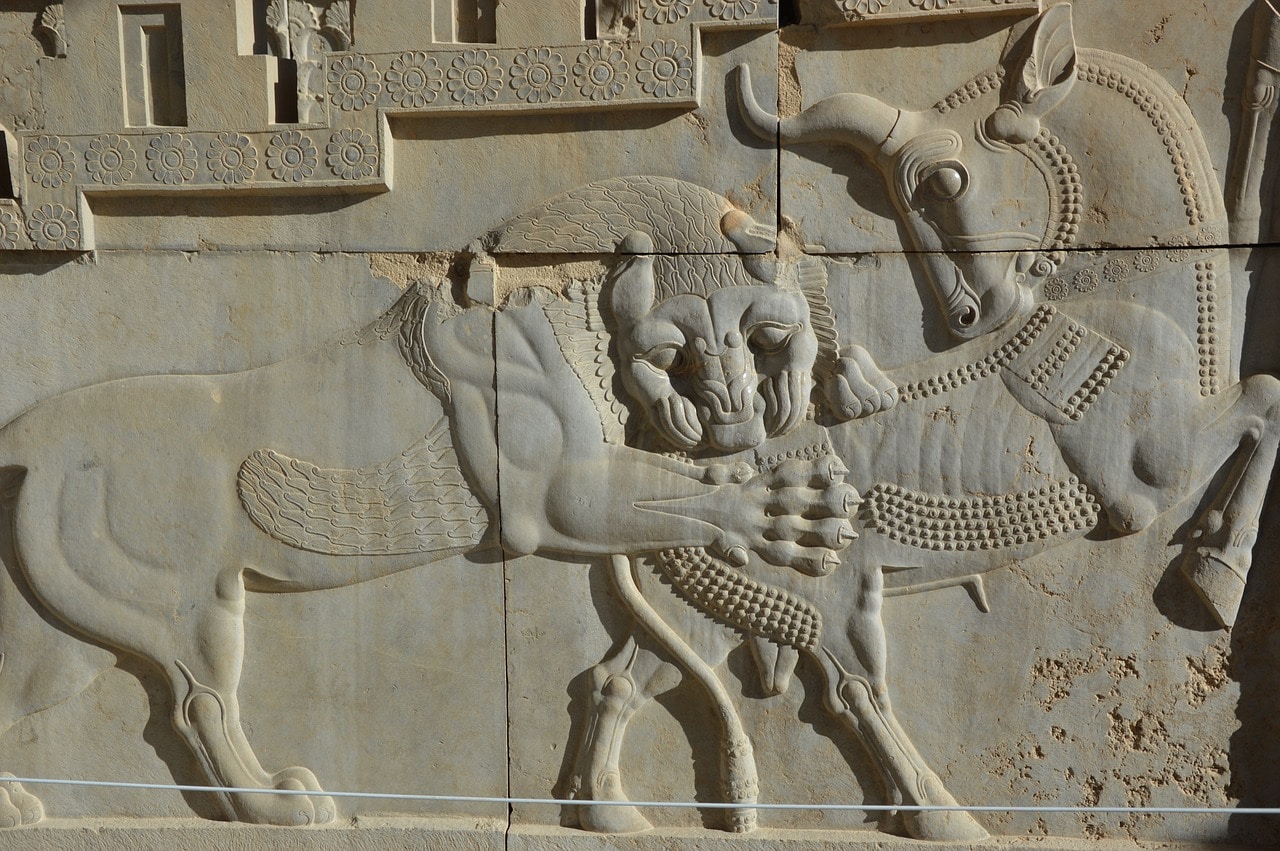
Table of Contents
Ancient Persian symbols, often seen in old lithographic scriptures, are known for their mysticism and grandeur. Despite their age, they’ve maintained relevance, increasing in popularity over time. The term “ancient Persia” refers to a historical region in the Middle East, now primarily Iran, which was once a vast empire. Its capital, Persepolis, offers archaeological evidence of the civilization’s advancements in areas like astronomy and geometry.
Persian art often showcased stylized imagery of both fantastical and real animals, like lions, griffins, peacocks, and phoenixes. Today, these symbols continue to captivate us, forming a part of global culture. Let’s take a look at some of the most recognized Persian symbols. They serve as significant historical touchstones of ancient Persia and remain in use both in Iran and worldwide.
1. The Faravahar
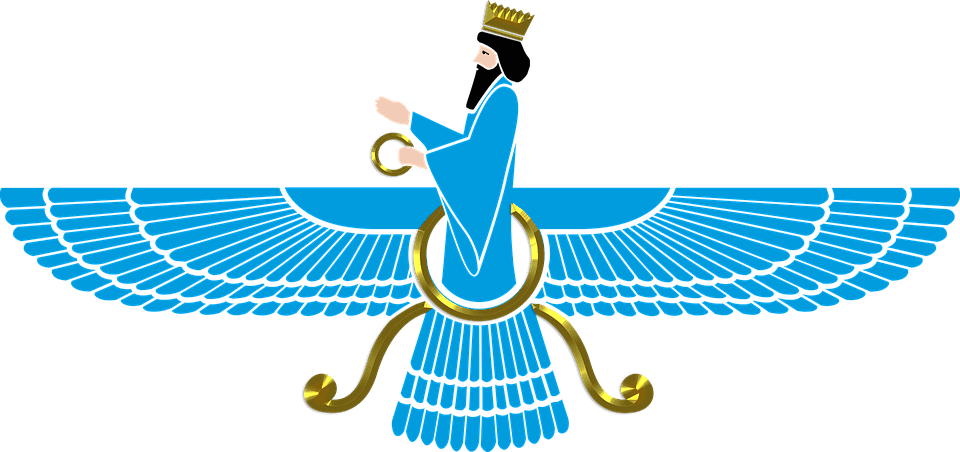
The Faravahar (also called the ‘falcon’) is the best-known ancient symbol of Persia, comprising a winged sun disk with a seated male figure at its center. While we know that the ancient Persians created this symbol, we don’t really know what it meant exactly to them.
Scholars have speculated that the Faravahar represents the most notable principle of the Zoroastrian prophet Zarathustra. This is ‘Good Thoughts, Good Words and Good Deeds’. According to Zarathustra:
- The seated male figure in the Faravahar is that of an old man, who represents wisdom of age
- The three main feathers on each of the wings represent good deeds, good words and good thoughts.
- The ring at the center symbolizes the eternal nature of the soul or the eternity of the universe. As a circle, it has no beginning or end.
The Faravahar is the most powerful spiritual symbol of Iran among Iranians as well as Kurds and Zoroastrians. While it’s a religious symbol at its roots, today it’s become a secular cultural and national symbol.
2. The Water Goddess of Persia: Anahita
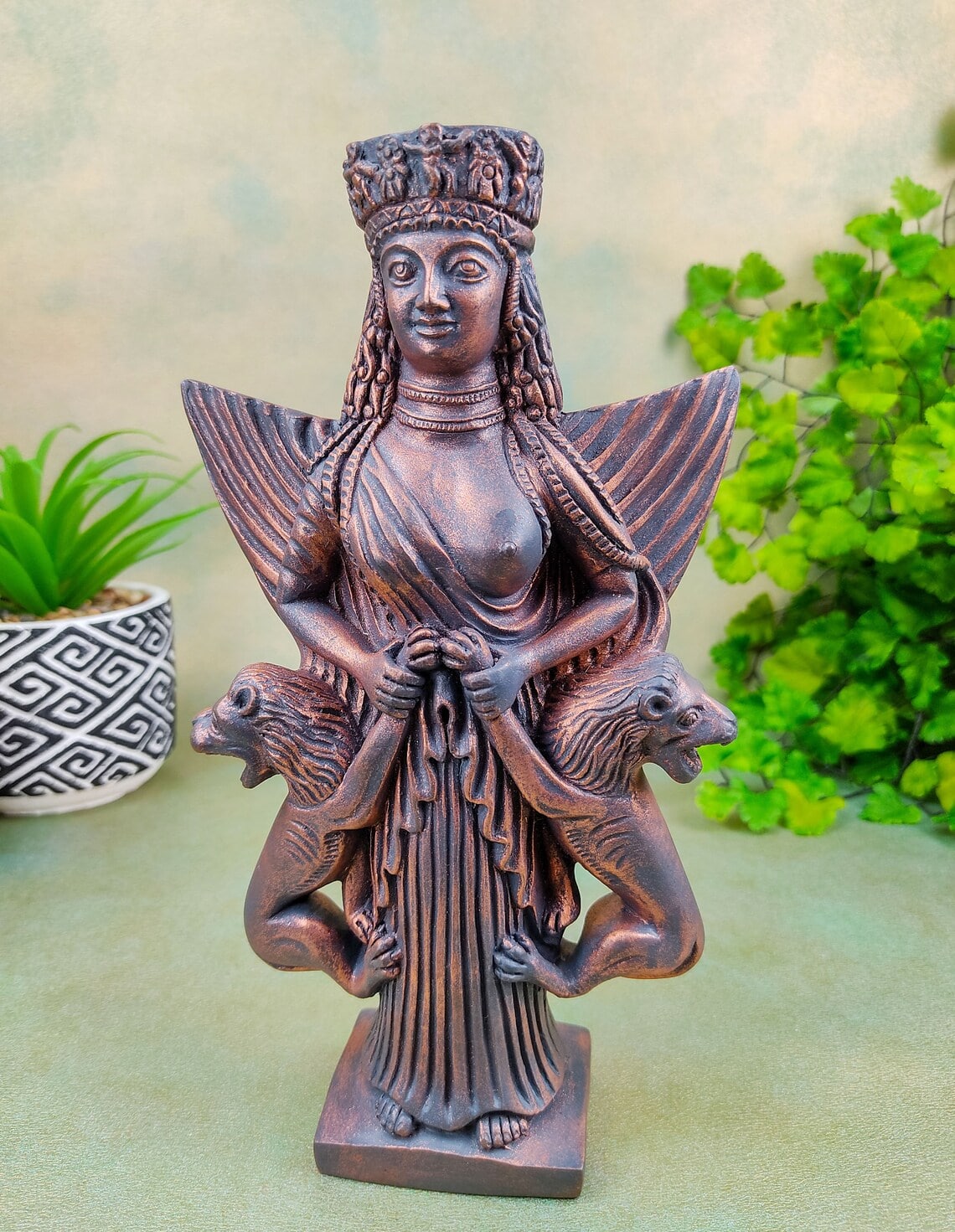
Statue of Anahita. See it here.
Anahita is the ancient Indo-Iranian Persian goddess of all the waters upon the Earth. She has other names, including the Lady of the Beasts, the Fertility Goddess, and the Goddess of the Sacred Dance. Depictions of Anahita often show her with two mighty lions on either side of her.
Most depictions of Anahita imply that she’s a virgin, wearing a golden cloak and a diamond tiara. Her name means ‘the immaculate one’. Associated with waters, rivers, and lakes of birth, she is the patroness of women. But Anahita is also a war goddess, because Persian soldiers would pray to her before battles for their survival.
In ancient Persia, Anahita was highly popular, appearing in many eastern religions. Her sacred animals are the peacock and the dove and she is closely associated with fertility, wisdom, and healing. There are two archaeological sites in Iran scholars believe were attributed to Anahita, one in Kermanshah Province and the other in Bishapur.
3. The Sun and the Lion
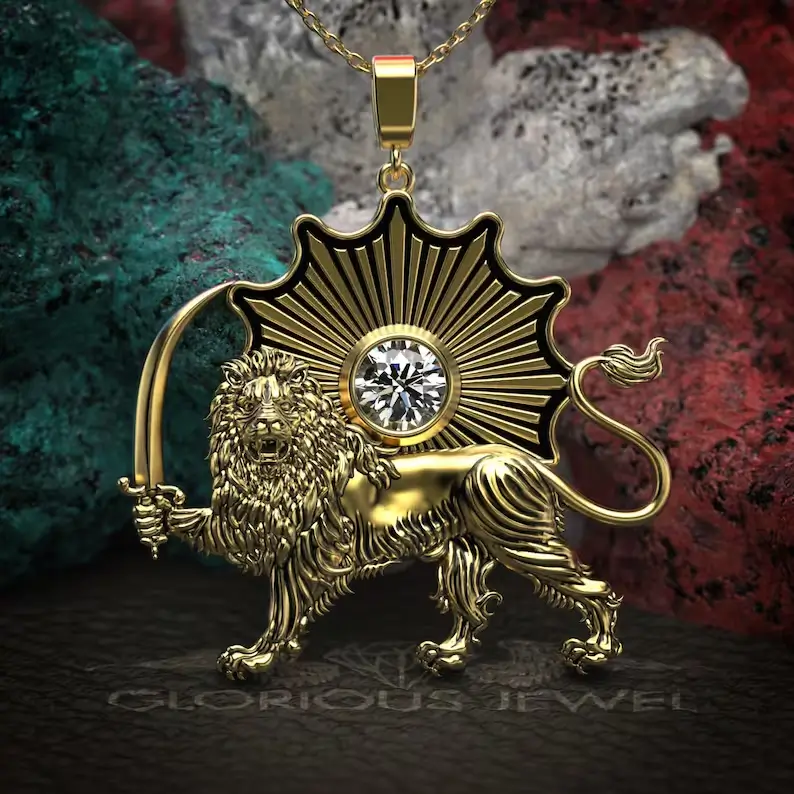
The Sun and the Lion is an ancient Persian symbol comprised of two images: A lion wielding a sword (or as it is known in Persian: a shamshir) with a sun in the background. This is one of the main emblems of Persia and was formerly an important element of the national flag up until the Iranian Revolution in 1979.
The sun symbolizes the ruler of heaven, while the lion symbolizes the lineage of kings as well as royalty and divinity. It is a famous motif that has been used throughout history since ancient times.
The sun and lion first became popular in Persia in the 12th century and continued to grow in popularity as a Persian symbol. It has several historical meanings and is based largely on astrological and astronomical configurations.
During the era of the Safavid dynasty, the lion and the sun represented the two pillars of society which were the Islamic religion and the state. During the Qajar era, the Sun and the Lion symbol became a national emblem. The symbol’s meaning changed several times between this era and the 1979 revolution. It remained the official emblem of Iran until the revolution when it was removed from government organizations and public spaces and replaced by Islamic emblems.
4. Huma the Bird of Paradise
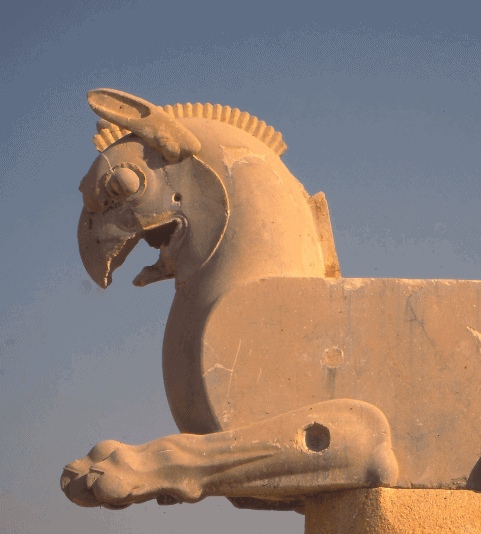
Griffin like statue in Persepolis, possibly showing a Huma bird.
The Huma is a legendary mythical bird from the Iranian legends and fables, which became a common motif in Diwan and Sufi poetry. It’s often referred to as a ‘bird of paradise’ in Ottoman poetry and symbolizes unreachable heights.
There are many legends about the Huma and some variations. However, what’s common in all these versions is that the Huma always circles high above Earth and never rests on the ground. In some versions, this is because it has no legs. The Huma is invisible to the human eye , and because it has the characteristics of both male and female birds, we don’t know its sex. In some versions, the Huma is like the Phoenix and goes up in flames after hundreds of years, before rising from its own ashes. If this legendary bird sat on someone’s head, it was a sign that the person would become a king.
The Huma was highly respected and viewed as a lucky sign. According to the Sufi tradition, catching the bird is completely impossible and beyond one’s wildest dreams but catching a glimpse or shadow of the Huma will bring you happiness for the rest of your life. While the Huma can’t be caught alive, anyone who kills the bird was doomed to die within 40 days.
The Huma has been featured on banners and flags over the ages. Even today, the Farsi/Persian acronym for the ‘Iran National Airline’ is HOMA and the emblem of the national airline depicts a stylized version of the Huma bird.
5. Bote Jeghe
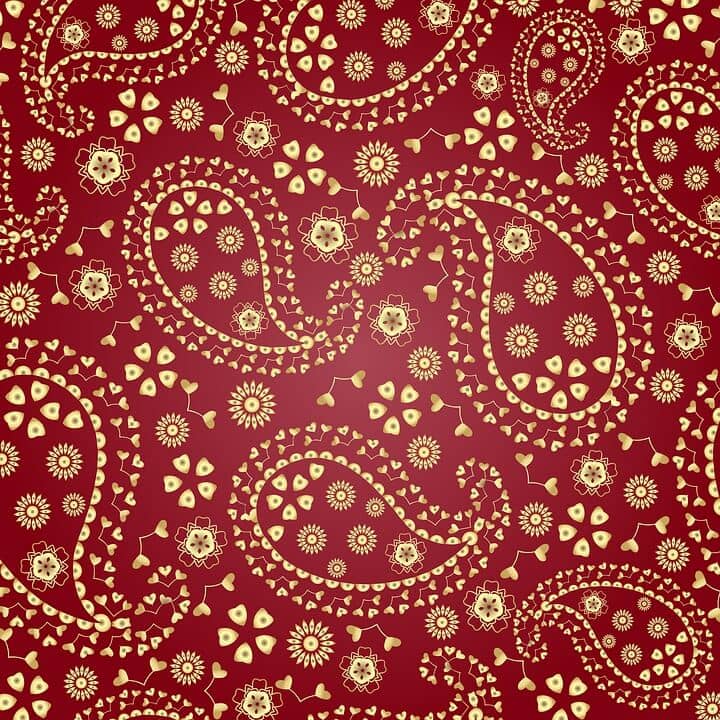
You might know this pattern as the Paisley. In fact, you may even have clothes featuring the Paisley design. What’s interesting is that it originated in Persia and is a meaningful symbol there.
Called the boteh jeghe, this is a tear-drop shaped design with a curved upper end. Boteh is a Persian word meaning bush or plant.
Today, the patterns is popular and is used around the world as a textile pattern for clothing, artwork and carpets. The English name Paisley, named after a town called Paisley in Scotland which was the first place where the boteh jeghe was copied.
The boteh jeghe is believed to be a stylized representation of a cypress tree and a floral spray, which are symbols of life and eternity in the Zoroastrian faith.
6. The Shirdal
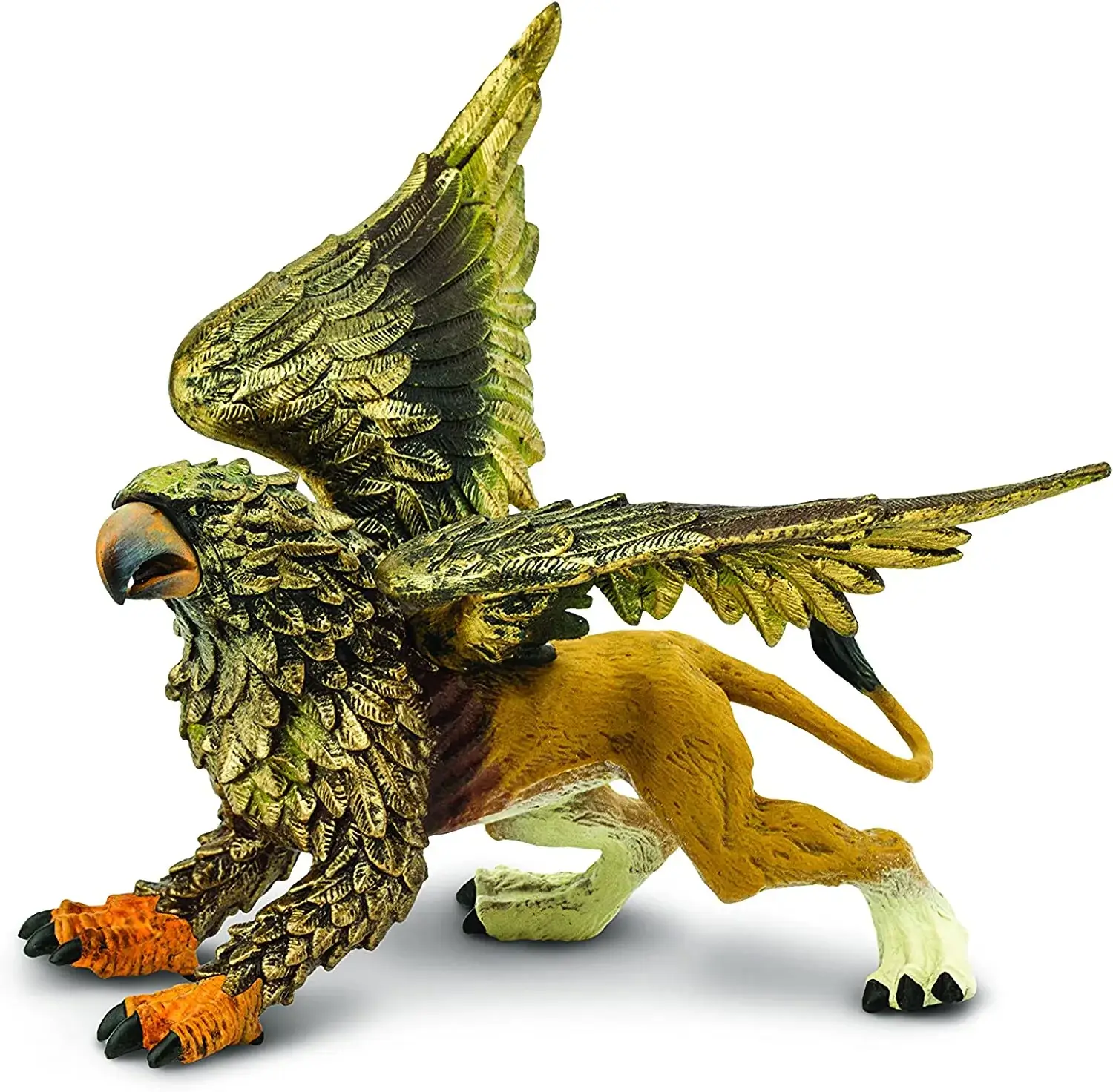
The Shirdal (the ‘Lion-Eagle’) is a legendary, mythical creature, highly popular in many fictional novels and movies. Better known as the griffin, this creature has the back legs and tail of a lion, and the head, wings and sometimes talons of an eagle.
To the ancient Persians, the Shirdal was a majestic and powerful creature, since the lion was considered the king of the beasts and the eagle the king of birds. Symbolic of leadership, power, courage and wisdom, the Shirdal has shown up in ancient art of Persia since the 2nd millennium B.C. It was also a common motif in the North and North West region of Iran during the Iron Age and appeared in the art of the Achaemenid Persian Empire, symbolizing Iranian wisdom.
The Shirdal is traditionally known for guarding gold and treasure. Later on in the medieval era, it became a symbol of monogamous marriage which discouraged infidelity. Shirdal were strictly loyal to their partner and if one of them died, the other Shirdal would never mate again. These special mythical animals also protect people from witchcraft, slander and evil.
7. Simurg
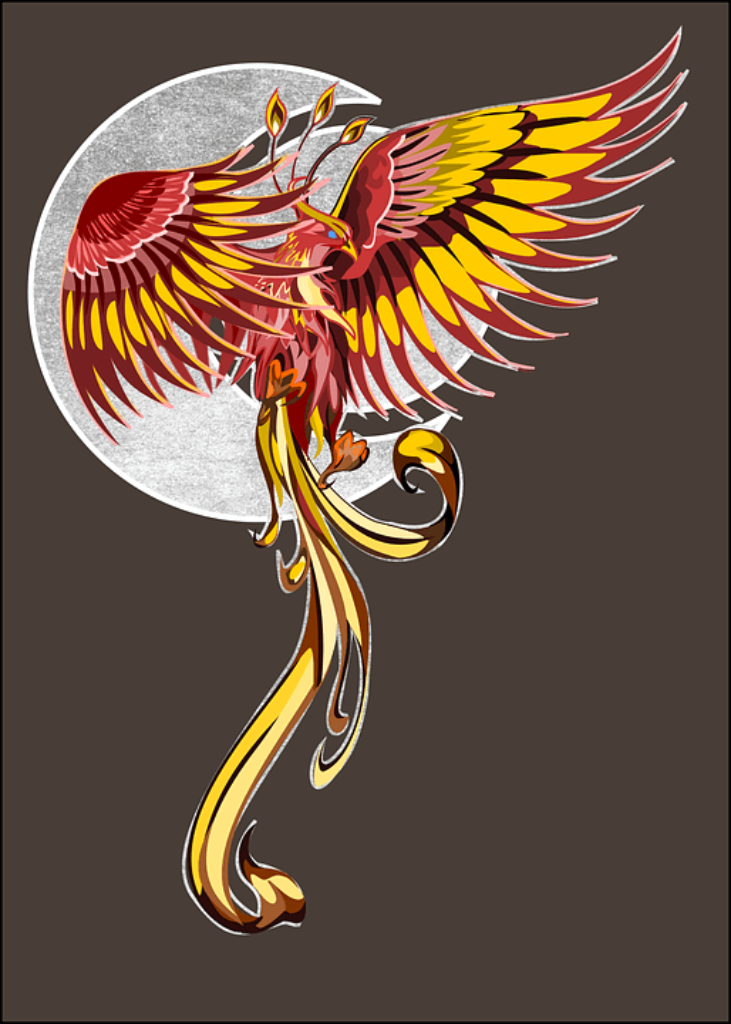
The Simurg (also spelled as Simurgh, Simour, Senvurv, Simorgh and Simoorgh) is a mythical flying creature in Persian mythology with gigantic female wings and a body covered with scales.
The Simurg is immortal and has the head and foreparts of a dog, the claws of a lion, and the wings and tail of a peacock. It sometimes has a human face. In Iranian art, the Simurg is depicted as a gigantic bird that’s large enough to carry a whale or an elephant. It’s an inherently benevolent creature and by most accounts, is female.
The Simurg was a guardian figure with healing powers and the ability to purify the waters and land and bestow fertility. It appears in all periods of Persian art and literature and is sometimes equated with other similar mythological birds such as the phoenix, the Persian Huma, or the Arabic Anqa.
Mentioned frequently in modern and classical Persian literature, the Simurg is used in Sufi religion as a metaphor for God. It appears in many ancient tales of creation and according to Persian legends, it was an extremely old creature that had witnessed the destruction of the world three times.
The Simurg is still used on the flag of an Iranian ethnic group called the Tat people and can be seen on the reverse side of the Iranian 500 rials coin.
8. Mount Damavand
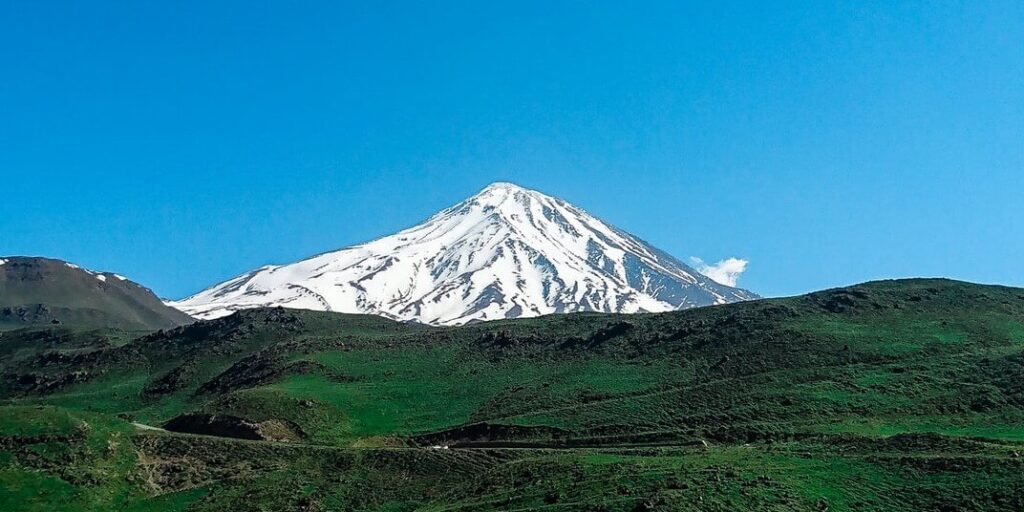
Mount Damavand is an active stratovolcano, the highest mountain peak in Iran, and the highest volcano in all of Asia. Damavand is significant in the mythology and folklore of Persia. It’s believed to have magical powers because of its many hot water springs. These are believed to treat wounds and chronic skin ailments.
Mount Damavand is still depicted on the back of the Iranian 10,000 rials banknote and is symbolic of the Persian resistance against despotism from foreign rule. At 5,610 meters, it’s an honor for any Iranian who climbs it to reach the summit of this legendary mountain.
There are numerous legends and local stories that attribute several magical powers to Mount Damavand. It is the most sacred mountain in Iran and has been the source of inspiration for many Persian poets and writers throughout history. Even today, this mountain is known as the mother of Persian myths.
In Brief
There are many other Persian symbols, some more obscure than others, all beautiful and meaningful. The above list features some of the best-known and most influential symbols, such as the paisley pattern or the mythical shirdal, that have come into modern life and fiction. To learn more about Persian symbols, check out our articles on the Farvahar, simurg, and the paisley pattern.

Related Articles:
11 Major Persian Gods and Goddesses – A List
Zarathustra (Zoroaster) – The Iranian Prophet Who Changed the World
What Does the Simurgh Symbolize?






